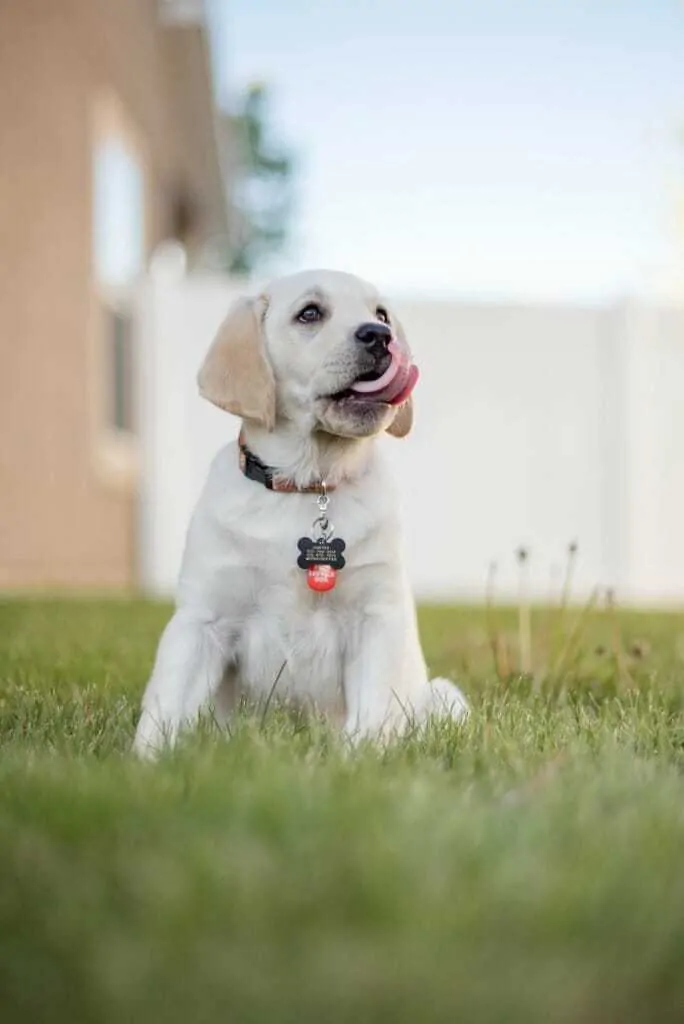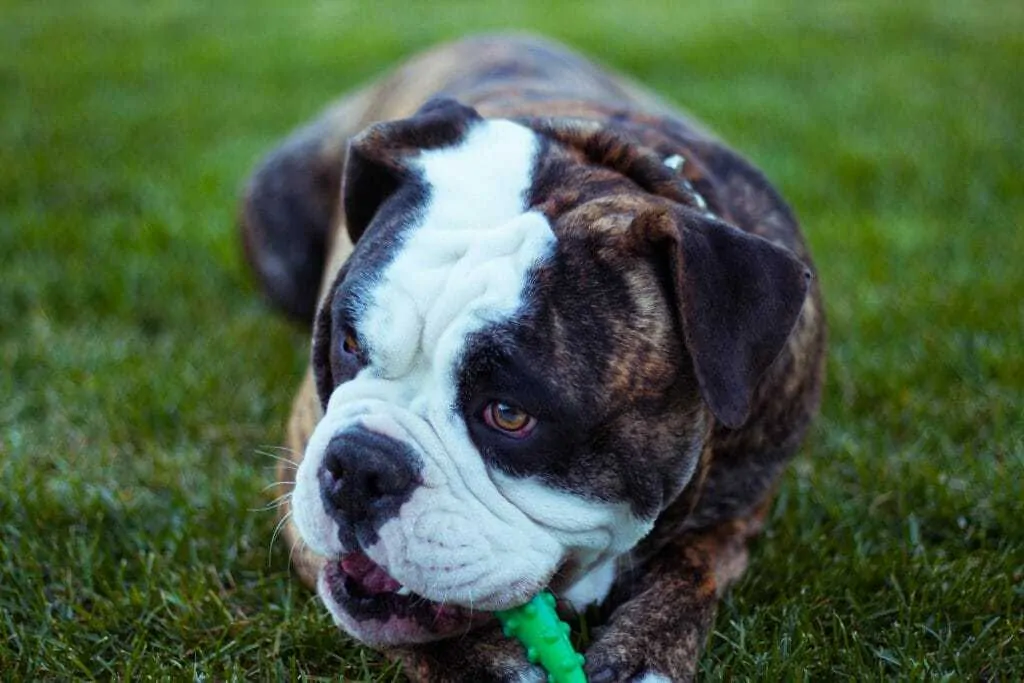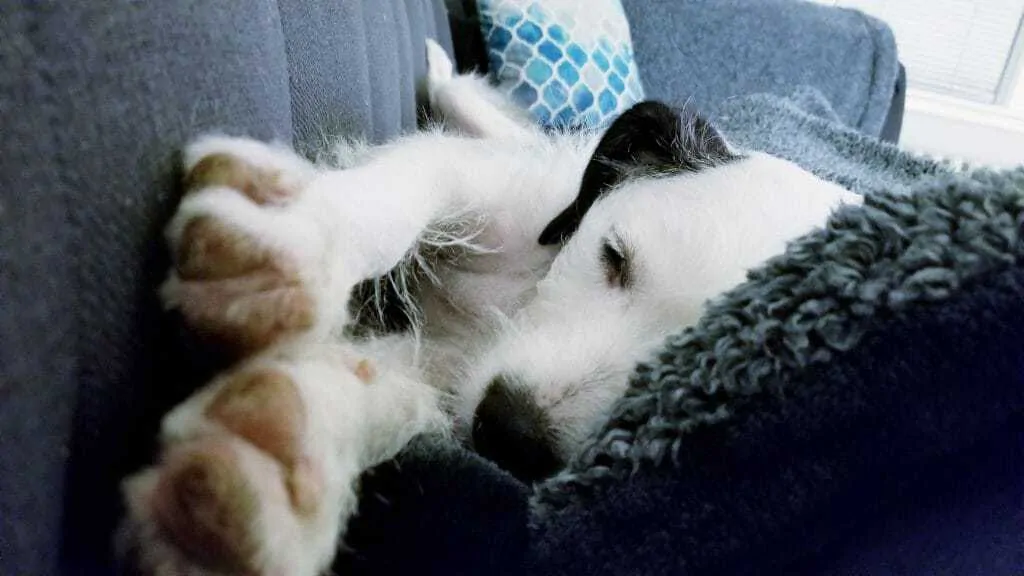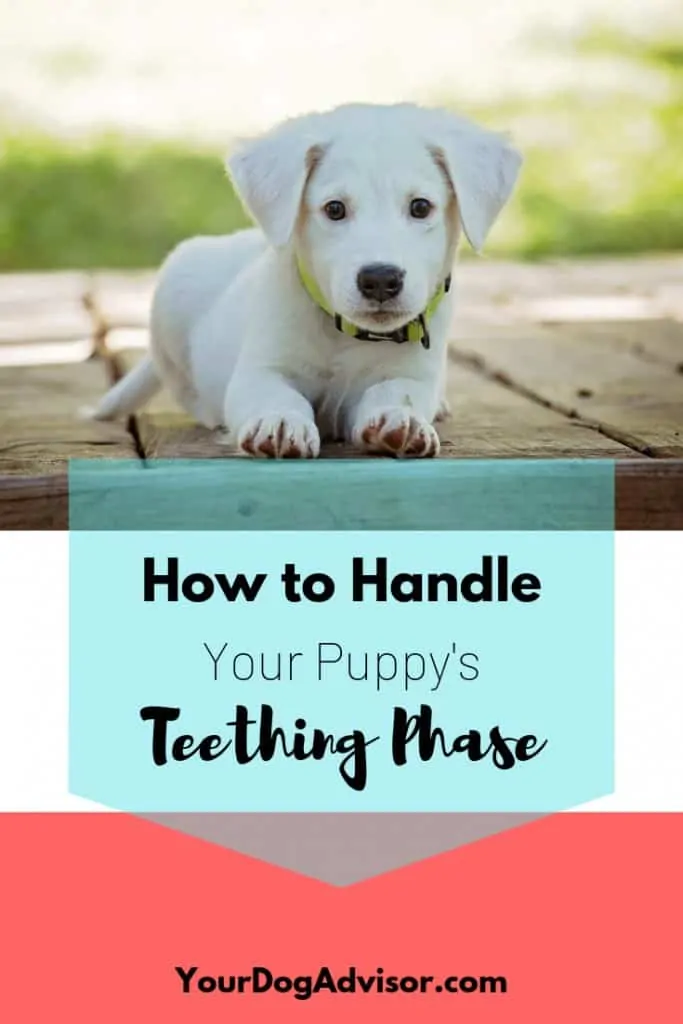Bringing a new puppy into your home can be an exciting time. If you’ve recently taken home a new fur friend, we’re willing to be you’ve recently spent your days soaking up the sweet kisses, basking in the warm cuddles and, let’s be honest, have probably filled up your camera with adorable sleeping puppy photos.
And while, yes, they are insanely cute, puppies are not without their challenges: including teething.
Shortly after birth, puppies receive their 28 baby teeth. Like human babies, these teeth are temporary and will begin to fall out as early as 3 months of age (but this will vary based on breed and size). As these puppy teeth fall out, they are replaced with 42 permanent adult teeth.
Teething in a puppy can last for as little as one month to as long as three months.
This phase of a puppies life can be a trying time for both you and your canine friend. During teething, your puppy may experience increased drooling, gum bleeding or general discomfort.
To help alleviate this pain, your furniture, clothing or even fingers and toes may become subject to puppy nibbles and chewing.
So how can you help your sweet puppy (and your home) during the months of tireless teething?
Contents
Chew Toys
Quality rope toys (ones that won’t fray or break) are perfect for teething puppies.
No – your teething puppy isn’t chewing up your couch out of resentment. Dogs who are in the process of losing their baby teeth are going through an uncomfortable transition and chewing can actually help to relieve some of their discomfort.
For this reason, it’s important to provide your puppy with appropriate chew toys during their teething phase.
Take note: Puppies can chew. For this reason, try to choose teething toys that will last. The best chew toys will be ones made out of nylon or other durable material.
Most pet stores will actually have products advertised for teething puppies, like Nylabone. Nylabones are great because they come in a variety of flavors and sizes, so you can pick the perfect option for your puppy breed. (My little Dachshund loves these chicken flavored ones!)
If your puppy is going through a particularly bad teething week, try finding cold chew toys, or ones that are made to be frozen. Cold temperatures can help alleviate some of the soreness puppies experience in their gums during teething.
Even ice cubes are perfect for a puppy with teething troubles! They can chew on the ice cube directly or you can place it in their water bowl.
So… are there bad teething toys?
Yes. Avoid giving your puppy actual bones as small pieces can break off and, when swallowed, may damage your puppy’s stomach over time. In addition, toys will small parts that can be accidentally ingested should not be given to a teething puppy.
Positive Reinforcement
It’s one thing to provide your puppy with a teething chew…and another for your fur baby to actually use it.
If you find your puppy opting for items that are off-limits (like shoes, coffee table corners or fingers) – be patient and utilize positive reinforcement.
Punishing a puppy negatively can have adverse effects. Use reward-based training during a puppy’s teething phase.
Yelling or screaming at your dog may actually worsen the behavior out of fear. Instead, teach them the phrase “No” by repeating it anytime they are chewing on something they shouldn’t be. Use a firm tone without expressing outright anger.
Then, offer your puppy a chew toy instead and praise them endlessly when they use it. This lets the puppy associate their toys with a positive reaction and will encourage them to opt for their chew toys over alternative household items in the future.
Puppy-Proof Your Home
One way that we as pet owners can help our canine companions during this time is by removing items from our home that may encourage bad teething behavior.
- Do a general sweep of the area and remove any small items from the floor. (I can’t tell you how many times I found my little guy chewing on pens, hair ties, and bobby pins that had snuck their way into corners of my home!)
- Keep shoes in closets or above eye-level from your puppy so they won’t be tempted to use them as a chew toy.
- When you leave your puppy home alone, try to confine him to a kennel or an area of your home where there is little for them to chew on. (Even doors and the corners of cabinets are not safe from some teething pups!)
Proper Diet
Last but not least It’s important to ensure your puppy is getting all the essential nutrients to help him grow into a strong, healthy dog. Proper diet care for your puppy during the teething phase will encourage his adult teeth to come in strong and naturally.
Look for brands that are formulated specifically for puppies, like Purina Puppy Chow. These types of puppy food are made with ingredients to promote a healthy, balanced lifestyle for your growing puppy.
Dog food that is high in calcium helps to promote healthy bone development, including teeth.
If you’re unsure about what food to try, consult your veterinarian. He/she can offer valuable insight on the best kibble for your puppy based on age, size and breed.
By around 6 or 7 months all of your puppy’s baby teeth should have fallen out, making way for their permanent adult teeth – and a much happier pup!
But caring for your puppy’s teeth doesn’t stop there. Like humans, dogs require regular dental care throughout their lives. However, you can rest easy knowing one of the more difficult stages of your dogs life is done and you (and your shoes!) came out alive.

Jen Jones is a professional dog trainer and behavior specialist with more than 25 years of experience. As the founder of ‘Your Dog Advisor’ and the ‘Canine Connection’ rehabilitation center, she applies a holistic, empathetic approach, aiming to address root causes rather than merely treating symptoms.
Well known for her intuitive and compassionate approach, Jen adopts scientifically-proven, reward-based methods, encouraging positive reinforcement over punishment. Jen specializes in obedience training, behavior modification, and puppy socialization. Her innovative methods, particularly in addressing anxiety and aggression issues, have been widely recognized. Jen has worked with many of the world’s leading dog behaviorists and in her free time volunteers with local animal shelters and rescue groups.








